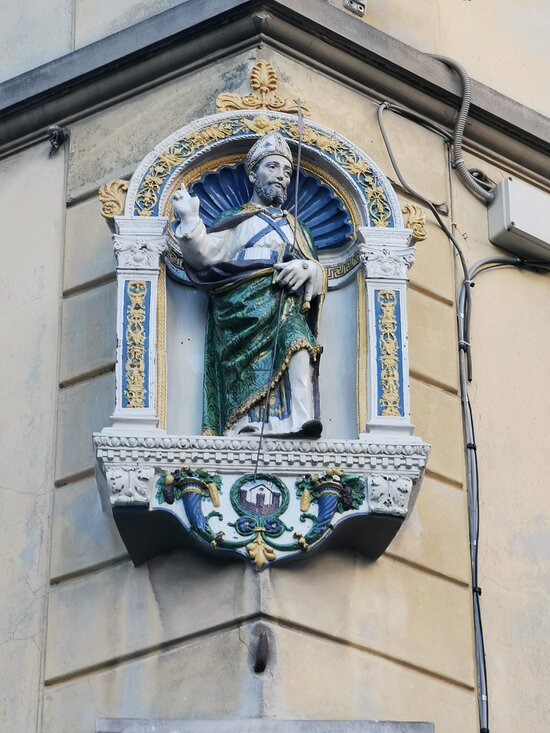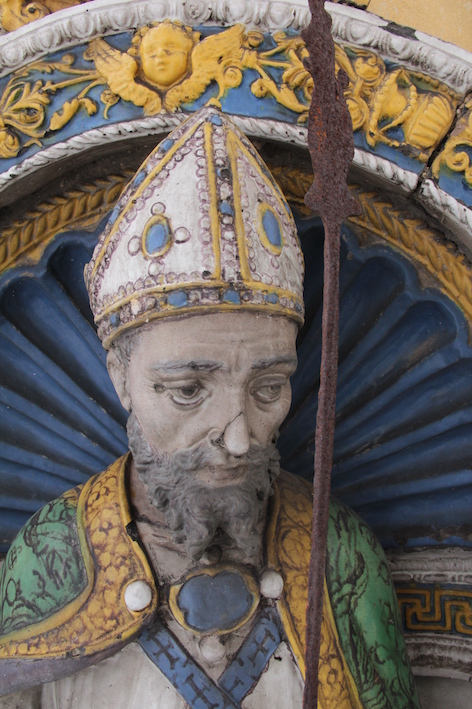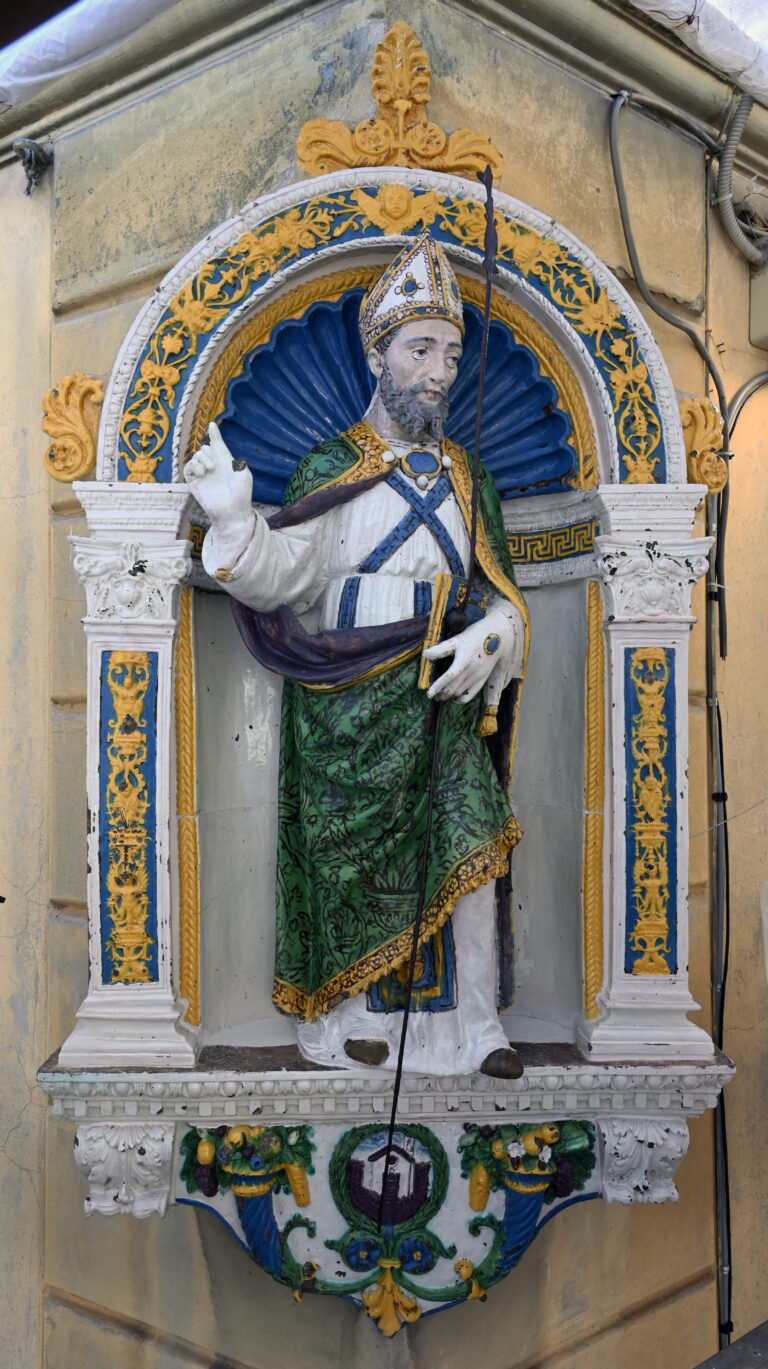Tabernacles of Florence
Piazza Sant’Ambrogio corner of via de’ Macci
THE TABERNACLE
Sant'Ambrogio benedicente
Giovanni della Robbia's polychrome St. Ambrose, with its original tabernacle, takes us back to the time of the Bishop of Milan's coming to the still in many ways pagan Florentia of the early centuries, where the Saint obtained many conversions by opposing the idols worship, exhorting purity and chastity and inflaming the Florentine community with his sermons.
Tabernacle
Realized by Giovanni della Robbia around 1525, the tabernacle has regained the colors vividness that make its details precious, thanks to the excellent restoration: the damask mantle, the mitre, the rich gemmated gloves and the blue shell of the niche.
THE STREET
VIA DE' MACCI
The Macci were a wealthy Ghibelline family who owned several buildings near Via Calzaiuoli. However, during the political struggles between the Guelphs and Ghibellines, their property was confiscated and they were forced to retreat to this area, among the poorest in central Florence at the time. Here, in 1335, Caio Macci founded the hospital and convent of San Francesco al Tempio de' Macci in memory of his father Francesco. Before taking its current name, the street had had several names as it was divided in shorter sections.
AUTHOR
Giovanni della Robbia
(Florence, May 19, 1469 - 1529/1530) He was an Italian sculptor and ceramist, specialized in the polychrome glazed ceramics technique, a family workshop specialty to which he successfully devoted himself. He accentuated the polychrome character of his works, adding new colors to the traditional blue/white bichromy of his predecessors.
The Sculptor
(Florence, May 19, 1469 - 1529/1530) The richness of color in the work is typical of the author style. In the pedestal medallion, the Red City coat of arms, with its walls, towers and little church is a moving testimony to the devotion of that neighborhood that had the privilege of welcoming Sant’Ambrogio (St. Ambrose).
Curiosity
The work was commissioned by one of those popular brigades, called “Potenze” (“Powers”). These had arisen among lay people in the mid-14th century and organized celebrations on various occasions. In the Sant’Ambrogio area operated the “Potenza della Città Rossa” (the “Power of the Red City”), so called for the proximity of a brick kiln and for the houses color all built in that exposed material.
OTHER INFORMATION
Info
AMICI DEI MUSEI FIORENTINI ODV - COMITATO PER IL DECORO E IL RESTAURO DEI TABERNACOLI - File by Giuliana Righi - Restoration by Alberto Bruschi - Restored by Friends of Florence with the contribution of The Peter Fogliano & Hal Lester Foundation (2020)
PICTURES

Tabernacle
Piazza Sant'Ambrogio corner of Via de' Macci

Detail: face
Piazza Sant'Ambrogio corner of Via de' Macci

Restored Tabernacle
Piazza Sant'Ambrogio corner of Via de' Macci
